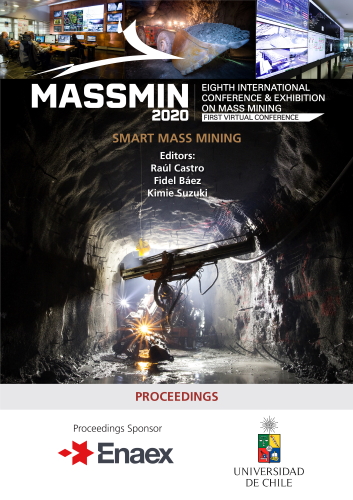Long term planning for a block cave project. Is the value being missed?

|
Authors: Bennett, W |
This paper is hosted with the kind permission of Lulea University of Technology, International Conference & Exhibition on Mass Mining, 2024.
DOI https://doi.org/10.36487/ACG_repo/2063_73
Cite As:
Bennett, W 2020, 'Long term planning for a block cave project. Is the value being missed?', in R Castro, F Báez & K Suzuki (eds), MassMin 2020: Proceedings of the Eighth International Conference & Exhibition on Mass Mining, University of Chile, Santiago, pp. 1013-1024, https://doi.org/10.36487/ACG_repo/2063_73
Abstract:
Block caving is a highly efficient mining method whereby deposits are mined from underground at low costs, approaching those of an open pit. As more projects successfully use this method, and confidence and expertise grow, it is likely that more projects will be mined in this way. Over the last few years, the author has been involved in a number of caving projects from early-stage studies, to feasibility, construction and production. This paper describes some of the mine planning challenges encountered in these projects. It also looks into the Mining Plus crystal ball to see what the future of block caving might look like. Based on a dissection of these projects, this paper makes three assertions. Firstly, strategic planning for a block cave shares more with the open pit than with other underground methods. Secondly, optimising a block cave can in fact be more complex than optimising an open pit. And finally, that as future technologies unlock opportunities to increase project value, the mine planning challenges will become even more complex. In conclusion, the question is posed: With all of the complexity and challenges of planning a block cave, is value being missed?
© Copyright 2025, Australian Centre for Geomechanics (ACG), The University of Western Australia. All rights reserved.
View copyright/legal information
Please direct any queries or error reports to repository-acg@uwa.edu.au
View copyright/legal information
Please direct any queries or error reports to repository-acg@uwa.edu.au
